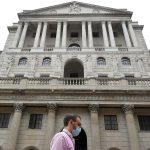More than one in eight privately rented homes in England are currently posing a “serious threat” to the health and safety of tenants, costing the NHS about £340m a year, according to a report from a committee of MPs.
The report found it is “too difficult for renters to realise their legal right to a safe and secure home”.
An estimated 13% (589,000) of privately rented homes in England were said to have at least one “category one hazard” – a serious threat to health and safety that landlords are legally obliged to address.
Examples of category one hazards include damp and mould growth, pests that could cause infections, and things that could lead to falls, fires or other accidents, like faulty wiring.
“Many tenants feel unable to exercise their rights and raise complaints with local authorities due to fear of eviction,” the report said.
Please use Chrome browser for a more accessible video player
“For those that do want to complain, their access to redress mechanisms is severely limited – the system is highly complex and requires significant time and resource to pursue court action.
“This will be particularly difficult for more vulnerable tenants who may lack awareness of their rights or how to enforce them.”
Cost of living: Inflation hits 30-year high of 7% as effects of Russia’s war in Ukraine begin to show
Cost of living: Inflation shows fuel costs have infiltrated every sector of our carbon economy
Tesco profits triple but supermarket warns of impact of inflation on costs
An estimated 11 million people rent privately in England, with the sector doubling in size during the past two decades.
The proportion of private rental properties with serious hazards is especially high in Yorkshire and the Humber, where one in five (21%) are impacted, the report found.
In London, the figure is one in 10 (9%).
MPs said local authorities, limited by a lack of support from the Department for Levelling Up, Housing and Communities, do not have the capacity and capability to protect renters, including those facing illegal evictions, and make sure landlords comply with regulations.
Very few are able to provide support to tenants facing illegal eviction or harassment after reporting problems, the report said.
Only one in 10 landlords have been banned since 2016, and councils inspect as little as 0.1% of their privately rented properties.






















